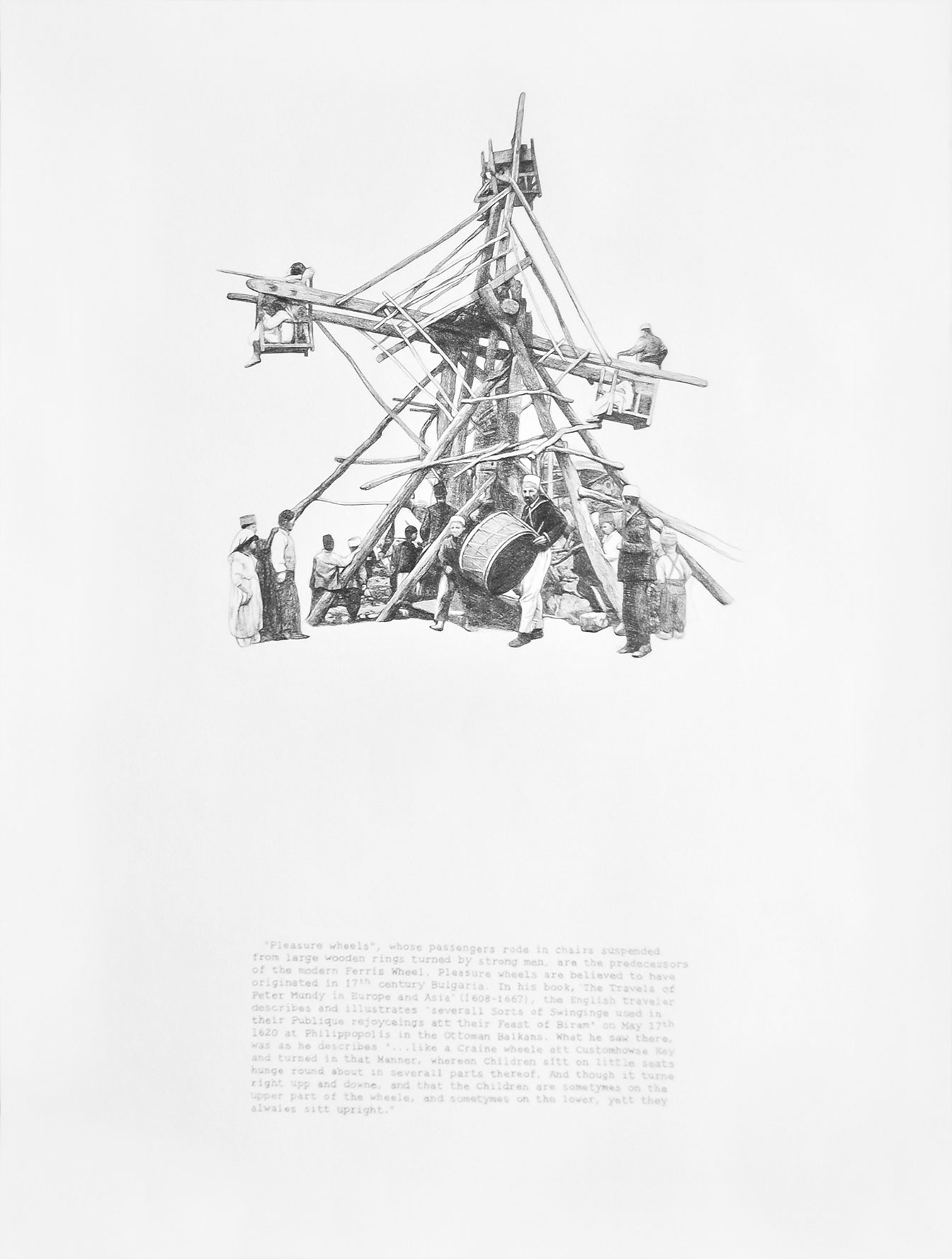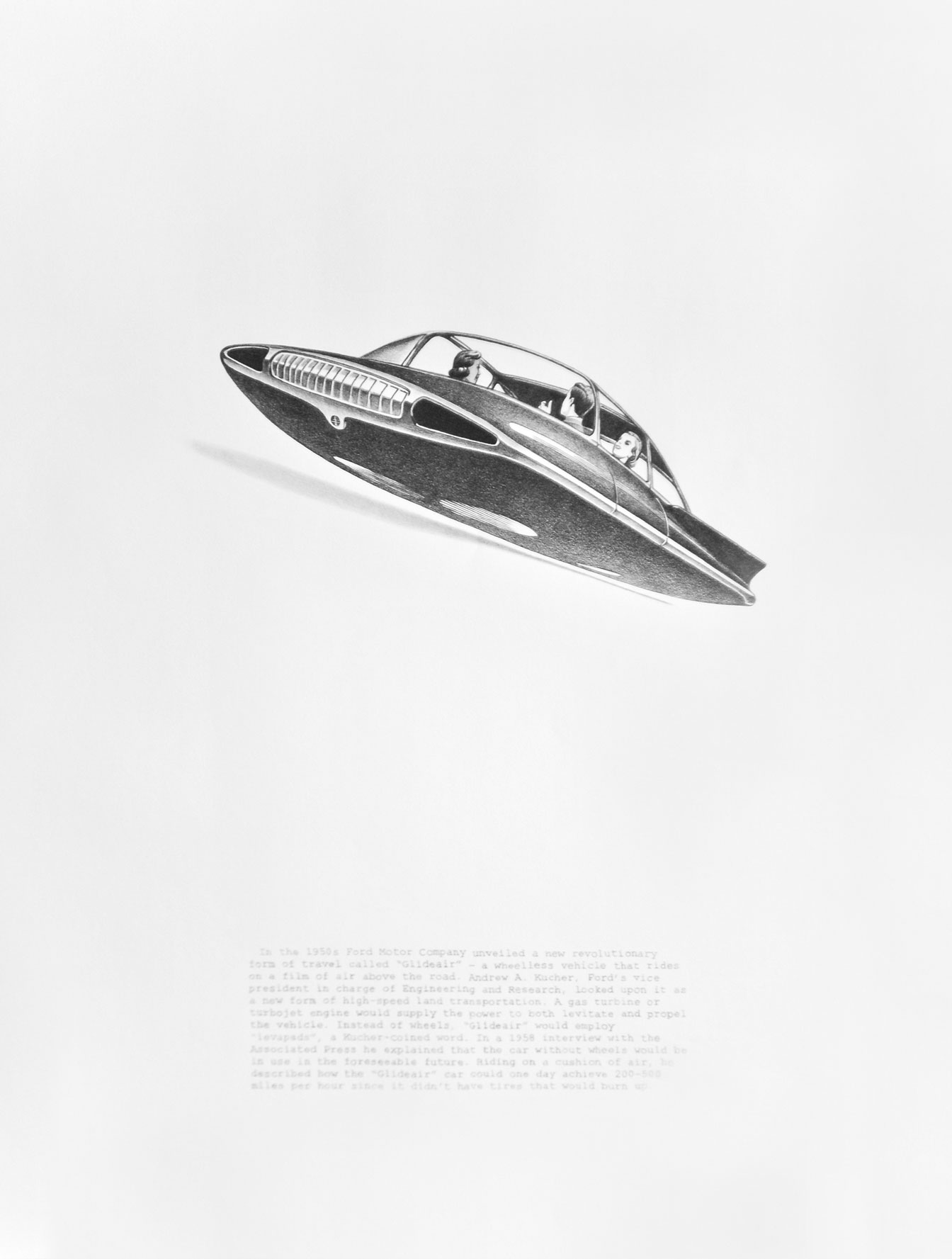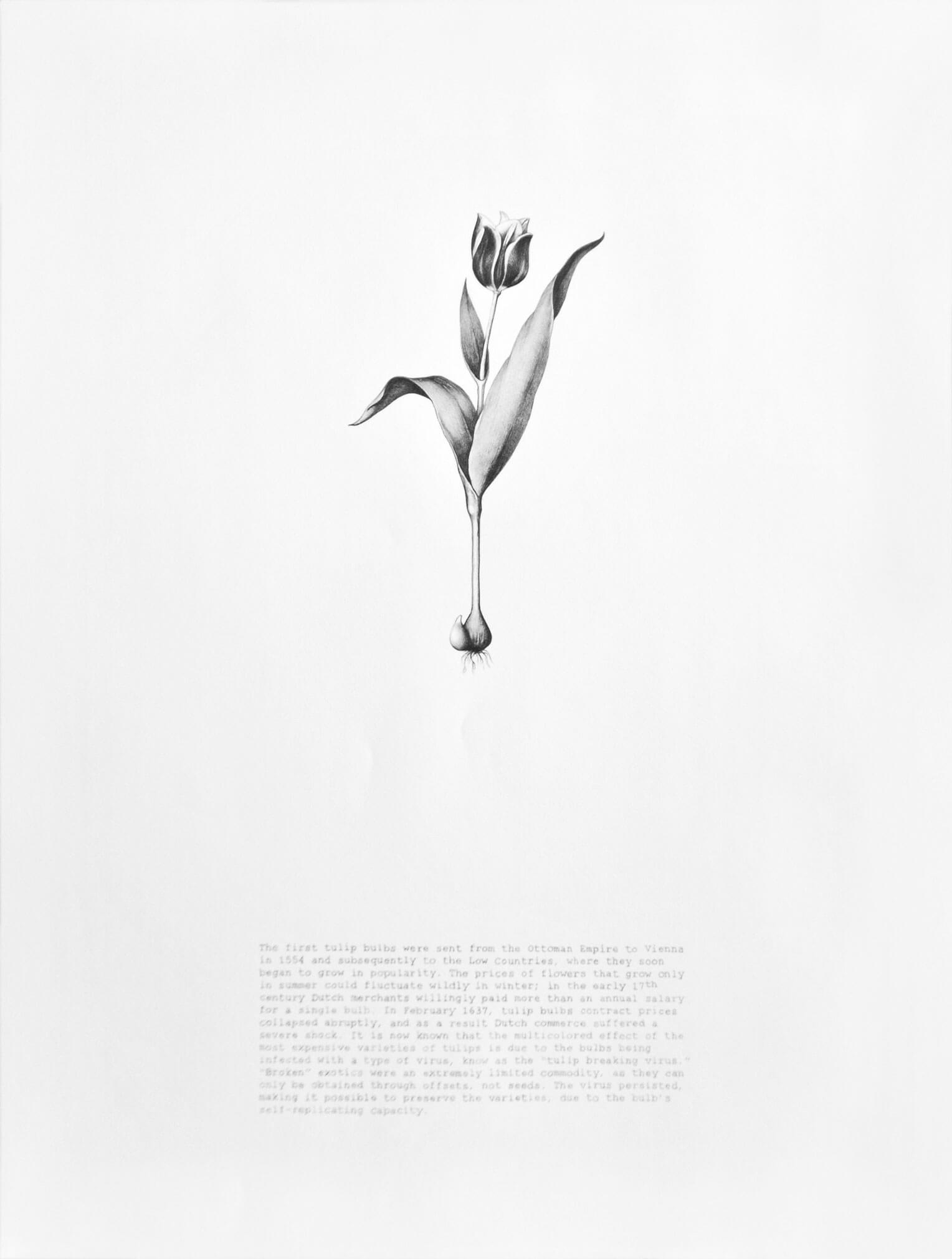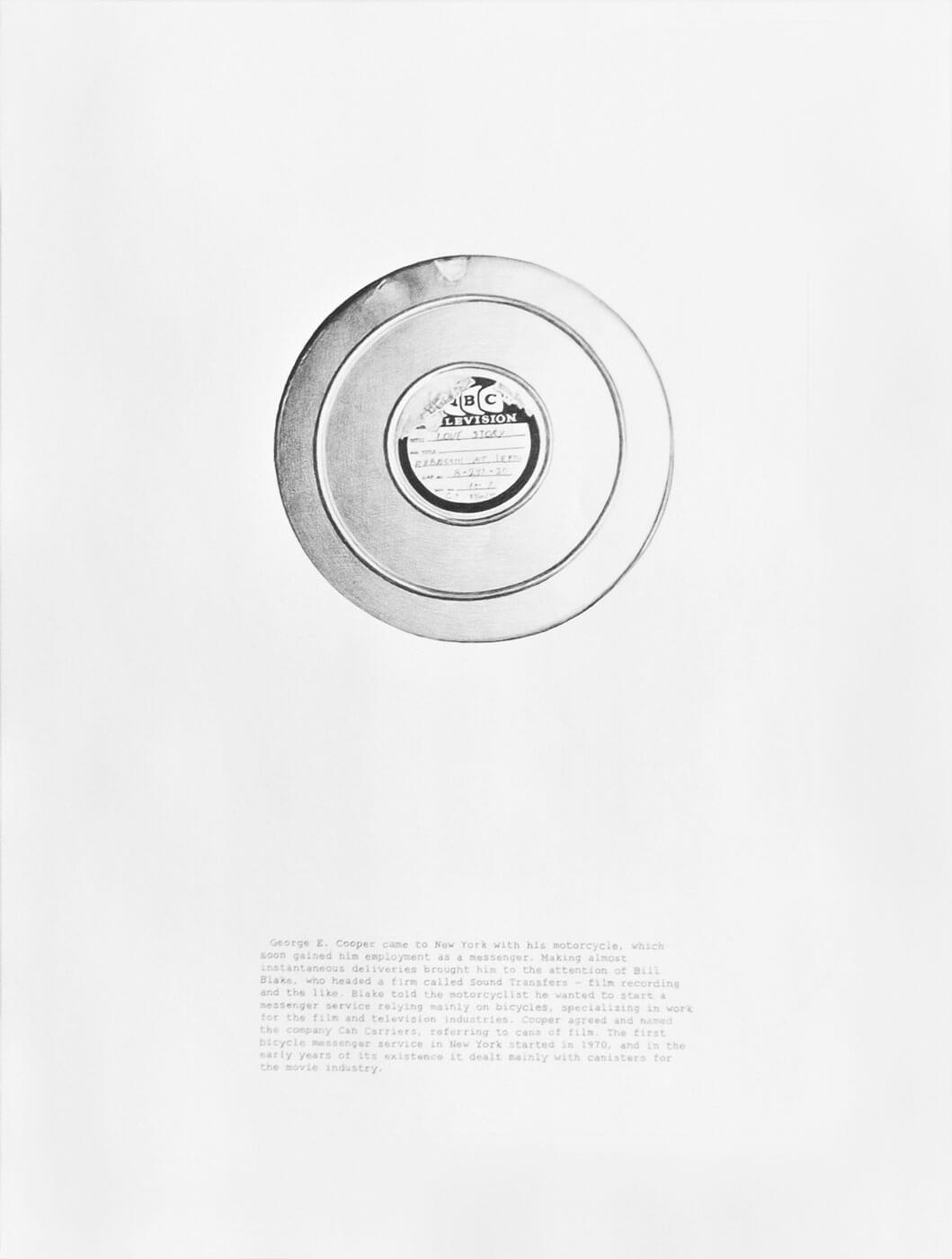
The project examines cycling as a metaphor for the cyclical nature of world economy. Economic cycles (or waves) are characterized by periodic crises, followed by shifts in the modes of production. Born amid the recession of the 1970s the bicycle messenger embodies the core principals, which are to define labor in the current techno-economic paradigm. The artist takes on the role of a real-life courier, and intervenes in the relations of production. The project marks the 40-year anniversary of the recession of 1973-75, and implicitly raises questions about its resonance for the present moment.
The Heavenly Bodies, Once Thrown into a Certain Definite Motion, Always Repeat
2013, 3 lightboxes, 16x10,5x518 cm (overall dimensions).
The lightboxes contain 67 photographs of packages and letters I delivered as a bicycle messenger. One alphabetical character was added in the lower right corner of each of the packages before they were delivered to the recipients. Put together in a chronological order, the 67 letters spell the sentence «The heavenly bodies, once thrown into a certain definite motion, always repeat.» It is quotation from the Capital by Karl Marx who made it metaphor for his theory of the business cycle.


Death of a Cyclist
2013, video, 3 min 5 sec.
The video contains a reference to the 1955 Spanish film noir »Death of a Cyclist,« in which the two main characters strike a bicyclist with their car, and are left to deal with the consequences of the murder. Here, the camera lens slowly approaches the rotating wheel of the thrown down bicycle, ultimately capturing a close-up of its cyclometer, which keeps counting.

The Heavenly Bodies, Once Thrown into a Certain Definite Motion, Always Repeat
2013, 6 pencil drawings
The drawings display a collection of objects and facts. Each drawing deals with different understandings of time and history, exchange and labor.


Pleasure Wheel
2013, pencil on paper, 100x75 cm
«‚Pleasure wheels‘, whose passengers rode in chairs suspended from large wooden rings turned by strong men, are the predecessors of the modern Ferris Wheel. Pleasure wheels are believed to have originated in 17th century Bulgaria. In his book, The Travels of Peter Mundy in Europe and Asia (1608-1667), the English traveler describes and illustrates ‘severall Sorts of Swinginge used in their Publique rejoyceings att their Feast of Biram’ on May 17th 1620 at Philippopolis in the Ottoman Balkans. What he saw there, was as he describes ‘...like a Craine wheele att Customhowse Key and turned in that Manner, whereon Children sitt on little seats hunge round about in severall parts thereof, And though it turne right upp and downe, and that the Children are sometymes on the upper part of the wheele, and sometymes on the lower, yett they alwaies sitt upright.’»

Wheelless Car
2013, pencil on paper, 100x75 cm
«In the 1950s Ford Motor Company unveiled a new revolutionary form of travel called “Glideair” – a wheelless vehicle that rides on a film of air above the road. Andrew A. Kucher, Ford’s vice president in charge of Engineering and Research, looked upon it as a new form of high-speed land transportation. A gas turbine or turbojet engine would supply the power to both levitate and propel the vehicle. Instead of wheels, “Glideair” would employ “levapads”, a Kucher-coined word. In a 1958 interview with the Associated Press he explained that the car without wheels would be in use in the foreseeable future. Riding on a cushion of air, he described how the “Glideair” car could one day achieve 200-500 miles per hour since it didn‘t have tires that would burn up.»

Soviet Eternal Calendar
2013, pencil on paper, 100x75cm
«In the autumn of 1929 the Soviet Union changed from the seven-day week to a five-day week. In the new system known as the “Soviet Eternal Calendar“ there were 72 weeks and additional five national holidays totaling a year of 365 days. The week consisted of four days of work and one day off. Each weekday was labeled by either one of five colors and each worker was assigned a color to identify with their day of rest. In the summer of 1931, after this brief experiment, the Soviet Union changed to a six-day week, in which every sixth day was a state rest day. The five national holidays remained, but as certain months have 31 days, the week after the state rest day of the 30th had seven days, and as February has 28 or 29 days, the week after the state rest day on the 24th was five or six days long. The calendar was abandoned on June 26th 1940 and the seven-day week reintroduced on the next day.»

Tulip Bulb
2013, pencil on paper, 100x75 cm
«The first tulip bulbs were sent from the Ottoman Empire to Vienna in 1554 and subsequently to the Low Countries, where they soon began to grow in popularity. The prices of flowers that grow only in summer could fluctuate wildly in winter;
in the early 17th century Dutch merchants willingly paid more than an annual salary for a single bulb. In February 1637, tulip bulbs contract prices collapsed abruptly, and as a result Dutch commerce suffered a severe shock. It is now known that the multicolored effect of the most expensive varieties of tulips is due to the bulbs being infected with a type of virus, know as the “tulip breaking virus.” “Broken” exotics were an extremely limited commodity, as they can only be obtained through offsets, not seeds. The virus persisted, making it possible to preserve the varieties, due to the bulb’s self-replicating capacity.»

100 Leva Bill
2013, pencil on paper, 100x75 cm
«In 1990, after the fall of the communist regime, the Bulgarian National Bank introduced several new banknotes in an effort to reform the currency’s visual appearance and eliminate political and ideological imagery relating to the country’s past. The new, politically neutral symbols often related to distant times and were charged with broadly accessible meanings. Among the new notes was the 100 leva. On its reverse side it depicted a mural known as the “The Wheel of Life” by the 19th-century painter Zahariy Zograf. His fresco represents the different stages of life as a circular path with inner circles divided into seasons and months. At the time of its introduction, the 100 leva was the highest value note available; it was worth almost a month’s salary. With the transition to a free-market economy, high inflation rates led to the rapid devaluation of Bulgarian currency. This was followed by the introduction of higher denominations, which culminated in 1997 when the National Bank issued a 50 000 leva note. The 100 leva bill was pulled out of circulation in 1999

Can of Film
2013, pencil on paper, 100x75cm
«George E. Cooper came to New York with his motorcycle, which soon gained him employment as a messenger. Making almost instantaneous deliveries brought him to the attention of Bill Blake, who headed a firm called Sound Transfers – film recording and the like. Blake told the motorcyclist he wanted to start a messenger service relying mainly on bicycles, specializing in work for the film and television industries. Cooper agreed and named the company Can Carriers, referring to cans of film. The first bicycle messenger service in New York started in 1970, and in the early years of its existence it dealt mainly with canisters for the movie industry.»